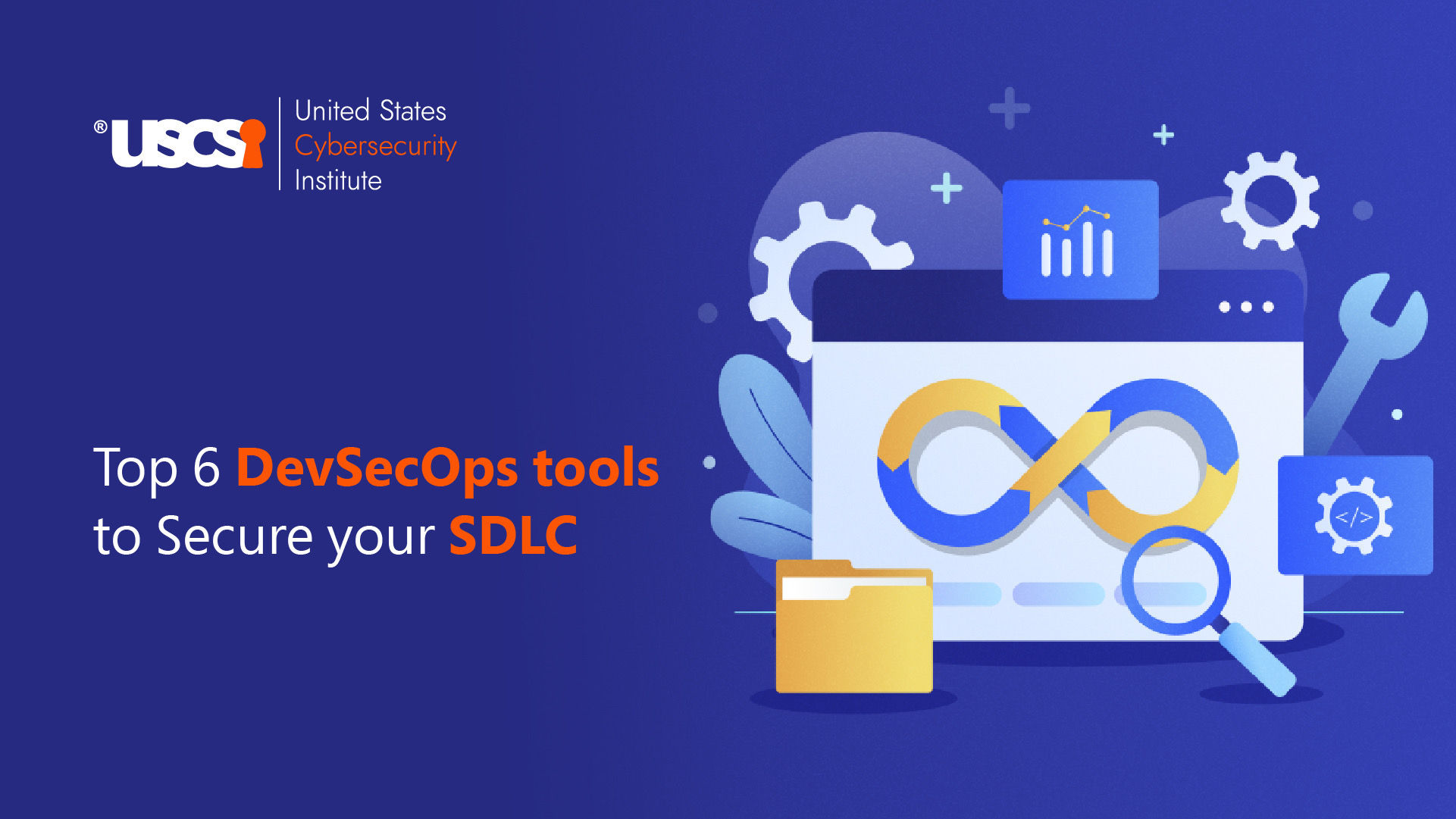

How to Secure SDLC using the Best DevSecOps Tools?
DevSecOps has completely revolutionized the entire software development industry by incorporating security into every stage of the software development lifecycle (SDLC) instead of treating it as just an after-development step.
The global DevSecOps market is expected to grow at a CAGR of 13.2% (2025-30) to reach a market size of $12.76 billion by 2027 (Source: Grand View Research).
For the success of DevSecOps, it is important to choose the right security tools and embed them throughout the SDLC, right from initial code commits to deployment and runtime monitoring. Also, these DevSecOps tools should be powerful as well as developer-friendly for integration during the software development process and avoid any resistance.
So, here we will discuss some of the most popular and developer-focused tools, many of which offer free and open-source tiers that everyone should be aware of in their DevSecOps career to enhance the development process.
-
IriusRisk (Threat Modeling)
Threat modeling is an important part of the modern software development process. IriusRisk is an automated threat modeling platform that helps developers and DevSecOps professionals identify and mitigate security risks early in the software development lifecycle based on system architecture diagrams and questionnaires. It is a great tool for scaling threat modeling across large organizations and reducing manual effort at the same time.Key features:
- It incorporates built-in security frameworks like OWASP, NIST, and MITRE.
- It can be easily integrated with tools like Jira, GitHub, and Jenkins.
- Offers a vast library of reusable components such as threat patterns and countermeasures
- Provides clear visual representations of security risks
- Helps with smooth collaboration between security and development teams
IriusRisk is available for free as a community edition (SaaS, up to three threat models) and a paid Enterprise edition (SaaS or on-premises, unlimited users, and purchasable threat models).
-
Semgrep (Static Application Security Testing)
This DevSecOps tool helps to combine powerful code analysis with dependency and secrets scanning. It has an intuitive custom rule creation feature that helps developers easily define code patterns, use company-specific coding standards, and find business logic flaws. It is also great at analyzing API specifications along with scanning numerous repositories simultaneously.
Key features:
- It has a context-awareness scanning feature that improves the accuracy
- With its custom standard enforcement feature it allows the creation of rules specific to organizations.
- It can also be easily integrated with major CI/CD platforms
Semgrep’s free version offers access to open-source rules, custom rule creation, and CI integration whereas with paid enterprise options like Semgrep Code, Semgrep Supply Chain, and Semgrep Secrets, developers can enjoy advanced features like secrets scanning, software composition analysis, role-based access control, and priority support.
Want to master the DevSecOps career? Then earning the best cybersecurity certifications from USCSI® can help you start and boost your career north.
-
ZAP and StackHawk (Web Application Security Scanning)
Zed Attack Proxy (ZAP) is a widely used open-source web application security scanner. It serves as a man-in-the-middle proxy to intercept and inspect messages between clients and web applications.
Automated vulnerability scanning, passive scanning, web crawling, and a REST API are some of the advanced features it offers.
StackHawk builds on ZAP and it is modernizing the DevSecOps workflows. It helps enhance the ZAP with:
- Native CI/CD integration especially with GitHub Actions
- Modern API security testing
- Simple configuration and setup
- Team collaboration features
- Improved dashboard and reporting features
- Improved handling of modern authentication techniques
ZAP is a popular free option whereas StackHawk offers a more organized and enterprise-ready product with dedicated support. StackHawk has paid tiers like Pro and Enterprise offering different features and contributor limits.
-
GitGuardian (Secrets Detection)
You will be using this tool in your DevSecOps job to prevent data breaches to automatically detect and secure sensitive information such as API keys and credentials throughout the SDLC. Its scanning engine can integrate with existing workflows to monitor repositories, commit, and pull requests in real time. It also helps with the prevention of accidental commits of secrets to public repositories.
This tool offers a free Starter tier with up to 25 developers and a paid Teams tier with access to up to 200 developers.
-
Trivy (Supply Chain Security Scanning)
This open-source security scanner provides complete vulnerability detection and security analysis for containers, applications, and infrastructure code.
Key features:
- Kubernetes security – it can identify misconfigurations and risky settings accurately
- Multilayer detection – it also scans for vulnerabilities in OS packages, dependencies, secrets, and licenses.
- Infrastructure as code coverage – can examine security configurations in IaC files
- DevSecOps integration – offers easy CI/CD integration
Trivy is a valuable DevSecOps tool for its combination of a variety of features including containers, IaC, and dependencies along with simplicity and speed.
-
CycloneDX (Software Bill of Materials)
CycloneDX is a lightweight software bill of materials (SBOM) specification that helps track and document software application components. Thus, it improves overall security and compliance management. It is a popular choice among DevSecOps professionals for managing software dependencies and supply chain risks because of its broad industry adoption and backing by OWASP.
It also easily integrates with other tools and supports various data formats such as XML, JSON, protocol buffers, and more. Professionals can also use it for creating SBOMs for various software types, hardware, and vulnerability disclosure reports.
DevSecOps has now become an integral part of the software development lifecycle.
Every software developer as well as cybersecurity professional must be aware of the various stages in the software development process and how to integrate these tools into each step of the process. By implementing these tools and integrating them into the SDLC, organizations can drastically improve their security posture and build more secure software.





